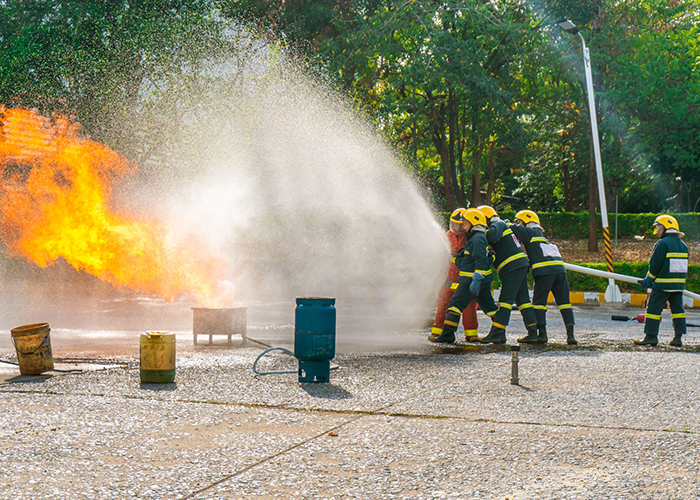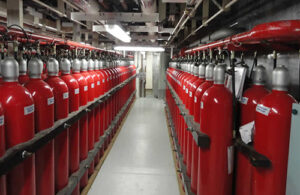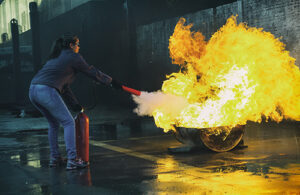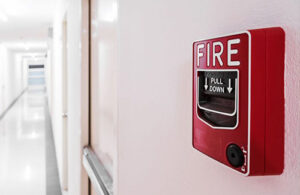Basics of Workplace Fire Safety Training
Because fires are dangerous to all buildings – whether you sleep, study, or work there – you should always have an escape plan. You may need to escape within minutes of starting a fire, so your safe exit depends on immediate warnings from smoke alarms and advance routes.
Fire represents one of the threats to safety at work. It is not only a danger to workers but also to the general public. Fires can cause serious injuries or even death. Work fires can also cause serious property damage and can result in the workplace being destroyed or permanently damaged. For these reasons, an effective fire fighting system is essential. In this article, we will look at the importance of occupational safety to plan and create, review and implement comprehensive and effective fire-fighting systems in the workplace.
Major Fire Hazards
Dust
Dust builds up slowly in areas such as wood, metal, and plastic, which are often in hard-to-reach areas, and can be a fire hazard if left unmanaged.
Electric Appliance
Skipping electrical sockets is a common fire safety hazard that is often overlooked. Make sure the electrical trays are not overloaded as they can be very hot. Additionally, the sixth rule of thumb is to turn off or remove devices, such as space heaters, when they can be used. Hot appliances such as computers, microwaves, and cables should be stored and kept clean and free of dust particles.
Heat Items
Flammable materials, such as paper and cardboard, provide diffused combustion fuel. These items may be stored in one place which allows fires to spread quickly and do more harm. Make sure your office has a regular waste disposal system and keep your workplace organized to ensure that exits are not blocked.
Liquids
Even if you do not work in a business that uses or maintains high amounts of flammable liquids, a very small amount of liquid can be a fire hazard if improperly stored near a heat source. Any flammable liquid should be kept in a sealed, ventilated cupboard to ensure that it is not too close to the heat source.
How to respond if there is a fire incident
Take it seriously.
Treat all alarms as a fire emergency – don’t think it’s a drill. Call the fire department. Never wait to investigate the situation before informing the fire department. Any delay will allow the fire to grow and endanger those who live in buildings and property.
Close the doors as you go.
Workers should close the doors behind them when they go out, as this can help reduce the spread of smoke and fire throughout the building.
Don’t take the elevator.
Employees should never use elevators during a fire, for three reasons:
– The closure is possible because elevators often fail in an emergency.
– The elevators can quickly become full of smoke.
– The caravans need to be available by the new firefighters.
Have a designated meeting place.
Fires can cause chaos, so it is important to have a designated meeting place where all employees can be counted. The location should be away from the building and where the fire department will be located.
Using a fire extinguisher
Fire extinguishers should not be used by untrained people. Before subduing a fire with a fire extinguisher make sure you or someone else has raised a fire alarm and that you have a safe way out.
Using the appropriate type of fire extinguisher, use the four-step process.
- Pull: Pull the pin, this will break the signal for interference.
- Purpose: Point to the ground, point to a pipe or pipe at the bottom of the fire. Do not touch the horn on the CO2 fire extinguisher, it is very cold and can damage the skin.
- Press: Press the handle to release the fire extinguishing agent.
- Sweep: Sweep back and forth under the fire, fuel source, and extinguish the fire.
Many people safely extinguish small fires. However, death or serious injury is possible by a fire that has gone beyond control. Always make sure you put your safety and that of other people first.
Responding to Fire Fighters
Do not return to the building until authorized by the chief fire officer in charge. Follow all instructions given by your designated fire safety officer, fire chief, or firefighter
Employees should try to fight small fires with the appropriate fire fighting equipment but only after the alarm has been raised and as long as they can do so without putting themselves at risk. Fire extinguishers are only designed for use to put out small fires and large fires should be left to professional firefighters.
You never know when an emergency may arise and you need to be prepared for it. No one wants to be caught unaware and do not know what to do when there is a problem with their equipment or technology, and having AMC in place is one way to combat such problems.
You will be able to call maintenance personnel to assist you and they will be able to take care of any problems that you may have. That way, your systems will always be up to date and you can be ready for any surprise audits or more importantly, fires.
Why Acufire Delivers more than an AMC?
At Acufire, we aim at striving for excellence and excellence comes along with specialized care. Find below how our AMC delivers well to your requirements.
Fire system and equipment inspection and repair under AMC
All fire systems including fire alarms, water pipes, hydrants, fire extinguishers, emergency lights, etc. They are regularly inspected to ensure that their working is proper and that there are no faults in the installation.
A fire hazard is highly dangerous, but it can be completely avoided with proper care and preparedness.






